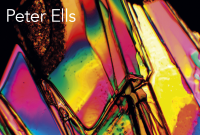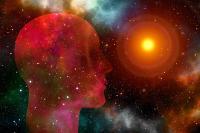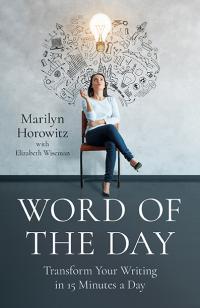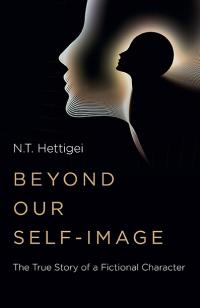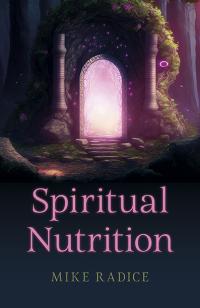

Search:
Contents:
- CHAPTER 1 HOW TO SUBMIT AN INQUIRY
- CHAPTER 2 WRITING YOUR PROPOSAL
- CHAPTER 3 THE CONTRACT OFFER
- CHAPTER 4 AUTHOR SERVICES
- CHAPTER 5 THE EDITORIAL AND PRODUCTION PROCESS
- CHAPTER 6 MARKETING YOUR BOOK
- CHAPTER 7 FAQs
- CHAPTER 8 ROYALTIES
Children’s Unexplained Experiences in a Post Materialist World
By Donna Marie Thomas
Across time and cultural cosmologies, unexplained experiences have been documented in children, from telepathy and conversing with the deceased, to out of body and near-death experiences. Children’s Unexplained Experiences in a Post Materialist World examines how children’s lives, outside of the usual five-senses-sensorium, are theorized through traditional scientific and medical lenses. Thomas argues how children’s unexplained experiences tend to be understood as either mental disorder or gifted/psychic, having significant implications for children and their families. Neither explanation carries a potential to see children’s experiences as natural facets of being human – highlighting how little we still know about our potential capacities as human beings. In some cases, children’s unexplained experiences are shown to carry healing potentials that can be missed when not explored with children, argues Thomas. These experiences may point to a child’s closeness with, what Carl Jung saw as “the original vision”, a dynamic and transpersonal field that underlies and informs how we cognize and interact with the world.
Children’s Unexplained Experiences in a Post Materialist world brings to light, and applies, controversial, radical, yet needed ideas about the nature and emergence of children’s experiences. Drawing on the voices, insights and institutions of children, the book includes real world examples of children conversing with deceased grandparents, knowing events before they happen and having peak or mystical experiences. The book traverses a history of scientific experiments with children, showing how they demonstrate a natural capacity for extra sensory cognition. More recent research with children, conducted by Thomas, is included in Children’s Unexplained Experiences in a Post Materialist World. Thomas identifies a range of extra sensory experiences and how children make sense of them. Modern systems and western culture are not geared to understand or see the potential in children or their experiences. Through the book, children’s unexplained experiences are explored within social, cultural, scientific and philosophical lenses, showing how modern-day society treats children’s experiences as impossible. Children’s experiences and insights are never afforded the opportunity to inform how children’s services, like education or mental health, are shaped. Thomas sets out ways for researching children’s unexplained experiences in inclusive and participatory ways. Embodying the notion of what physicist Carl Wheeler saw as a participatory universe, recognising the illusory nature of subjects and objects, bringing in the near and here but also the far away and long ago.
Children may have much to teach us about the nature of consciousness. In Children’s Unexplained Experiences in a Post Materialist World, links are made between children’s experiences and how children fall into different senses of self. Thomas identifies how children report a sense of self that extends beyond our usual definitions of being an individual with a precise centre and location. In the book, children’s everyday activities are examined, such as natural play or video game play to highlight how these activities may induce states of consciousness that are conducive with unexplained experiences. Thomas explores the similarities between children’s activities and how adults actively try and induce similar experiences through practices such as prayer and meditation. Similar links are made between children with medical conditions that impact brain activity, such as inflammation, and studies which show how adult meditators or psychedelic-users experience rich conscious experiences -despite a reduction in key areas of the brain. Thomas suggests that until we understand these relations better, children and their unexplained experiences may continue to be silenced, diagnosed or excluded from serious research.
It becomes clear through the book that children and their unexplained experiences challenge dominant ideas about the world. Thomas suggests how mainstream materialism, and its associated theories, may not carry the explanatory power needed to better understand what it means to be human. Children, Thomas argues, are often forgotten in science, philosophy and social transformation – and now they may be needed more than ever - if we are to be reminded of our authentic nature and relationship with the world, especially at a time of global crisis. Unexplained experience is a double entendre, a play on words that points to how any subjective experience, mundane or exceptional, remains unexplained in science. In contemporary society, any facts about children’s unexplained experiences are deduced from facts about a physical reality. Modern physics works from the idea that there is a complete physical explanation for reality, except that consciousness is not part of this complete description. Scholars and scientists are breaking own old ways of thinking about the world and inviting others to consider these empirical, theoretical and philosophical possibilities. Thomas weaves children’s experiences with new scientific accounts of the world proposed by scientists such as Bernard Carr, Donald Hoffman and Dean Radin – scientists who are offering a new vision of the universe and our relationship to it.
Through the book, children’s unexplained experiences and philosophical views are set against emerging philosophical ideas of the world such as panpsychism, cosmopsychism and analytical idealism. Thomas describes this process as seeking philosophical explanations as a co-creative venture between children and the philosophical minds of our modern times. Children, Thomas argues, are natural philosophers that are, as Kastrup suggests in the foreword to the book, “still close, in time and experience, to the source of life and reality. They can still feel their roots, which are sunk deep into the warm and moist ground of being”. Research shows how children are natural theists, intuiting the universe with teleological purpose. The philosophical embodiment of younger children comes through acts of tasting mud, playing with worms and watching the concentric circles that form in puddles – before jumping into them. Philosopher, August Comte, described children as being in a particular quest for meaning that cannot be found in science and religion. In Children’s Unexplained Experiences in a Post Materialist World, a living experience philosophical approach is proposed as a bridge between the abstract and the everyday worlds of children.
In the closing chapters of the book, Thomas examines different philosophical models of reality, exploring their capabilities for logically explaining children and their unexplained experiences. Thomas lands on analytical idealism as an idea of the world that offers potentials for explaining and supporting children and their unexplained experiences. The post materialist child, according to Thomas, may be an alter of a mind-at-large. Following Kastrup’s ideas based on naturalist accounts of the universe and empirical studies in psychology and psychiatry, Thomas suggests that children, as private qualitative fields or alters of a mind-at-large, may have more permeable boundaries than adults. This being the case, children’s ways of being and experiences could be logically accounted for. As an idea of the world, analytical idealism is a model of reality that is capable of not just explaining abstract ideas, but one that could meaningfully inform how we understand and support children – as individual alters and as the field of existence itself. Thomas invites us to enter an imagined post materialist world in the final chapter of the book, a world with spaces and mentorship for children, their conscious probing reminding their elders of their origins. A post material world where systems are reshaped, like schools, opening their tight curriculums to include lost knowledge. Or modelling pedagogic practices in ways conducive to the post materialist child, allowing children to learn in creative and liberating ways to express their unlimited and unbounded selves and experiences. When children tell their carer they hear a voice in their head or travel outside their body, with our post material knowing, we may not be so quick to silence or assume disorder in our children.
Children’s Unexplained Experiences in a Post Materialist World by Donna Marie Thomas is available from wherever books are sold.
CLICK THE BOOK COVER TO READ TODAY
YOU MAY ALSO ENJOY
Categories:
0 comments on this article








